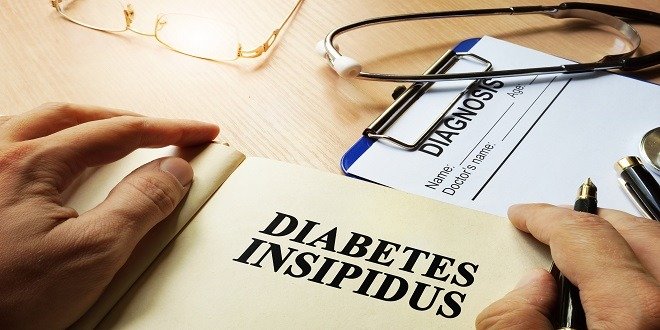
ADH is a hormone that controls how much water your kidneys make into urine to prevent you from getting dehydrated. People who don’t have enough ADH in their bodies can develop a condition called diabetes insipidus (DI) or water diabetes.
With DI, too much water is being pulled from the blood by your kidneys and flushed out through your bladder. In cases where you can’t increase your water intake, the condition can result in severe dehydration.
Types of diabetes insipidus:
There are four types of DI:
Central: Which is the most common and occurs when your body doesn’t produce or secrete enough ADH.
Nephrogenic: When your kidneys don’t respond normally to ADH and can’t retain water.
Dipsogenic: When you feel the need to take in too many fluids even when it isn’t necessary, which dilutes your urine.
Gestational: Which occurs in pregnancy and usually resolves after pregnancy.
What causes it?
In addition to having glands that don’t produce or release enough ADH into the blood, diabetes insipidus can be caused by:
- damage to the hypothalamus or pituitary glands during surgery
- a brain tumour or injury
- tuberculosis
- inflammation in the brain or on the membranes that cover the brain
- a family history of the condition
- certain medications, such as lithium
- kidney infection or kidney cysts
What are the symptoms of diabetes insipidus?
Some of the symptoms that may signal that there is an issue include:
- excessive thirst and urination
- dehydration
- weight loss.
While most of us produce two litres of urine a day, a person with diabetes insipidus may urinate three or more litres daily.
A baby with diabetes insipidus may be irritable, have trouble feeding, fail to meet regular growth milestones for his/her age, and suffer from high fevers. If left untreated in children, diabetes insipidus can lead to impaired mental function, hyperactivity, poor growth and restlessness.
How is diabetes insipidus diagnosed?
If you suspect you or your child has the condition, ask your healthcare provider for a urine and blood test to measure your body’s salt levels. A water deprivation test can also be administered to determine how much urine you are producing when you’re not drinking anything. An MRI of your head may also be necessary to examine your pituitary gland for any abnormalities.
What’s the difference between diabetes insipidus and diabetes mellitus?
These are different diseases altogether. While diabetes insipidus is caused by a lack of ADH or normal kidney function, diabetes mellitus is caused by insulin deficiency or resistance leading to high blood sugar levels.
Having diabetes insipidus does not mean you will develop diabetes mellitus. Here is more information on the types of diabetes and specifically diabetes in children.
So how is it treated?
A medication called desmopressin is often used to treat central and gestational diabetes insipidus because it works like ADH. This synthetic hormone is administered via intranasal spray, tablets or as an injection. For gestational DI, the condition typically resolves two or three weeks after childbirth.
Treatment for nephrogenic diabetes insipidus may require changing medications, using anti-inflammatory drugs, water pills or pain medications. It may also mean adopting a lower-salt diet to reduce the amount of urine your kidneys make.
For dipsogenic diabetes insipidus, it is important to address the underlying condition as well as reduce the amount of fluid you’re consuming.
Living with diabetes insipidus:
Diabetes insipidus is usually a permanent condition that cannot be cured. However, it only becomes a serious problem when you can’t replace the fluids lost in your urine. With medication available to correct the fluid imbalance, you can effectively keep the symptoms of DI in check. And in mild cases, simply drinking more water may be enough to manage your condition.

